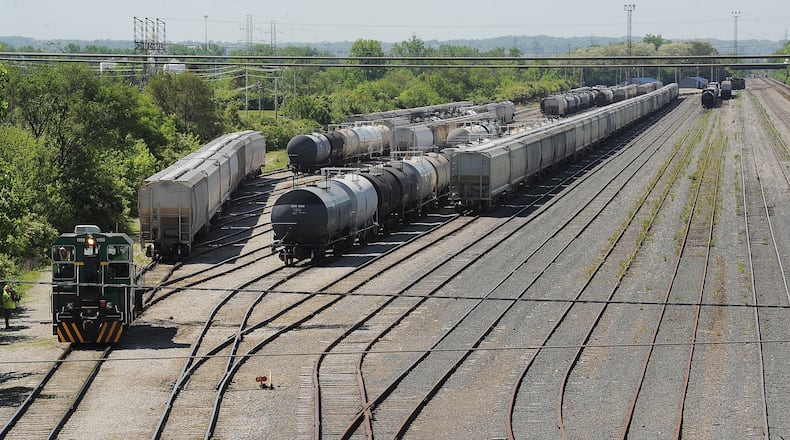Previous administrations had determined these routes to be unfeasible, Tierney told this news outlet Tuesday. “An updated feasibility determination is wise before proceeding with significant public expenditures of this nature,” he said.
Stu Nicholson, executive director of passenger rail advocacy group All Aboard Ohio, said the group is “cautiously optimistic” about DeWine’s request.
“We’re also, at the same time, grateful to the governor for taking this step,” Nicholson said. “This is a step that we had felt all along that needed to be made. There had to be at least a move made to begin the required environmental and needs assessment studies that precede any transportation project ... especially anything dealing with passenger rail.”
Amtrak spokesman Marc Magliari said the company welcomes Ohio’s interest. Last spring, Amtrak announced the “Connects US” plan, which includes 3C+D route of Cleveland to Columbus to Cincinnati via Dayton. It would also include a stop in Springfield in Clark County, according to proposal maps.
The route would offer three daily round trips, carrying an estimated 400,000 to 500,000 passengers annually (or between 1,000 and 2,000 per day), as previously outlined by Amtrak President Stephen Gardner.
It would cost approximately $100 million to build the line. The annual economic impact of the new service could be nearly $130 million, Gardner said.
Last week, the U.S. Department of Transportation’s Federal Railroad Administration released guidelines for its new Corridor Identification and Development Program, established with funding from last year’s Bipartisan Infrastructure Law. The law includes $102 billion in total rail funding, including $66 billion from advanced appropriations, and $36 billion in authorized funding. It recommends additional funding for Amtrak on an annual basis.
The Federal Railroad Administration (FRA) is soliciting formal proposals in 2022 from states and other interested public groups. It will select corridors for participation in the program based on readiness to begin development and other criteria, including projected cost, economic impact and ridership. For each selected proposal, FRA will work with the entity that submitted the proposal, the relevant states, and, as appropriate, Amtrak to prepare or update a service development plan.
Amtrak said FRA’s announcement is an important next step in helping expand intercity passenger rail in America.
“We are excited for state transportation departments and other parties to notify the FRA that they are interested in proposed new routes and expanded service to be considered by the FRA as part of this federal program,” Amtrak officials said. “This is an easy, effective, and no-cost way for states and local groups to take the first step and bring more trains to more people in their home states and across America.”
Passenger rail service in Dayton was eliminated in 1979. More than a decade ago, the state of Ohio was awarded $400 million in federal stimulus funding for a proposed 3C passenger rail corridor that would have stops and stations in downtown Dayton, Riverside and Springfield.
But then-Ohio Gov. John Kasich nixed the passenger rail project when he was elected in 2010, claiming it would require millions of dollars in taxpayer subsidies.
Nicholson said the new study, which could take between eight months and a year, should demonstrate why passenger rail will work in Ohio, the need for such a system, its environmental impacts and what needs to be done to the rail corridor to make it useable by faster, more frequent trains.
“I think Amtrak’s plan is frankly an even better plan in a lot of respects because it really opens up more of the state, not just the 3C+D,” he said. “You’re looking at being able to create mini-hubs for Amtrak ... as well as restoring service to the most heavily traveled and densely populated corridor in the state.”
Travel across the entire line should take about five hours, according to Amtrak’s initial estimate, but the majority of trips likely will be between city pairs, and the aim is to ensure that rail service, at least initially, is competitive with driving.
Amtrak has emphasized that its intent is not just to put trains on the corridor at competitive speeds, but also put the work into the corridor that enables even faster, more frequent trains, so that it becomes “clearly faster than driving,” he said.
“People need to keep in mind that no matter what that speed is, no matter if it’s five hours or four hours, the important thing about that time spent on the train is that it is not time that you have to spend with a death grip on a steering wheel and your feet alternating between the brake and gas pedal,” Nicholson said. “When you’re on the train, you can enjoy the ride or you can get business done.”
About the Author

